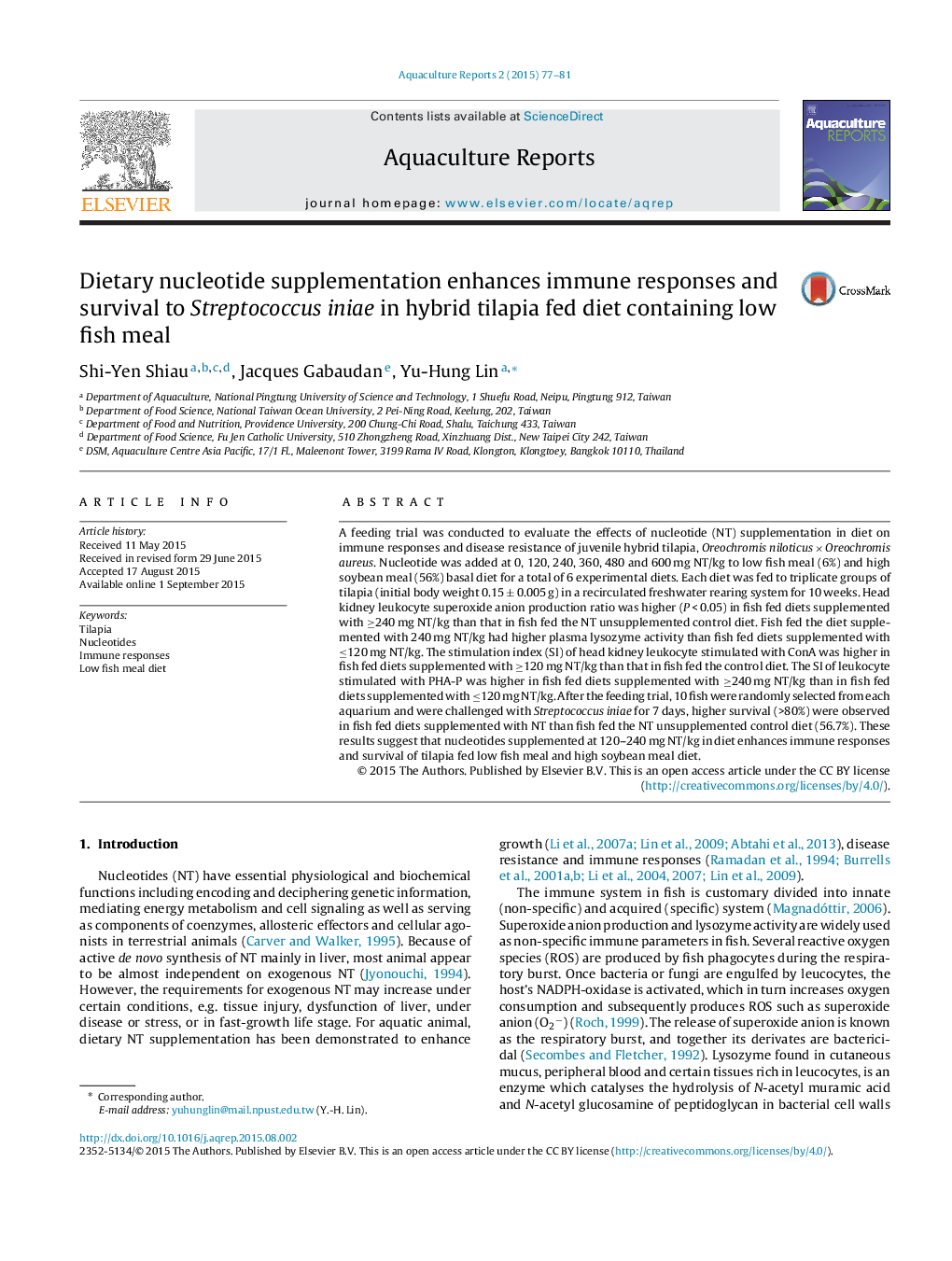| کد مقاله | کد نشریه | سال انتشار | مقاله انگلیسی | نسخه تمام متن |
|---|---|---|---|---|
| 4437972 | 1620278 | 2015 | 5 صفحه PDF | دانلود رایگان |
• We have evaluated the effects of dietary nucleotide (NT) on immune responses and disease resistance of tilapia.
• Dietary NT at 120–240 mg NT/kg enhances immunity and survival for tilapia.
• Additional NT is required for tilapia fed with low fish meal diet.
A feeding trial was conducted to evaluate the effects of nucleotide (NT) supplementation in diet on immune responses and disease resistance of juvenile hybrid tilapia, Oreochromis niloticus × Oreochromis aureus. Nucleotide was added at 0, 120, 240, 360, 480 and 600 mg NT/kg to low fish meal (6%) and high soybean meal (56%) basal diet for a total of 6 experimental diets. Each diet was fed to triplicate groups of tilapia (initial body weight 0.15 ± 0.005 g) in a recirculated freshwater rearing system for 10 weeks. Head kidney leukocyte superoxide anion production ratio was higher (P < 0.05) in fish fed diets supplemented with ≥240 mg NT/kg than that in fish fed the NT unsupplemented control diet. Fish fed the diet supplemented with 240 mg NT/kg had higher plasma lysozyme activity than fish fed diets supplemented with ≤120 mg NT/kg. The stimulation index (SI) of head kidney leukocyte stimulated with ConA was higher in fish fed diets supplemented with ≥120 mg NT/kg than that in fish fed the control diet. The SI of leukocyte stimulated with PHA-P was higher in fish fed diets supplemented with ≥240 mg NT/kg than in fish fed diets supplemented with ≤120 mg NT/kg. After the feeding trial, 10 fish were randomly selected from each aquarium and were challenged with Streptococcus iniae for 7 days, higher survival (>80%) were observed in fish fed diets supplemented with NT than fish fed the NT unsupplemented control diet (56.7%). These results suggest that nucleotides supplemented at 120–240 mg NT/kg in diet enhances immune responses and survival of tilapia fed low fish meal and high soybean meal diet.
Journal: Aquaculture Reports - Volume 2, November 2015, Pages 77–81
